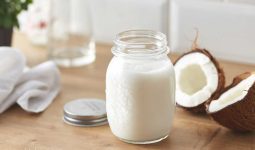If you’re curious about your diet and want to make informed food choices for a healthier lifestyle, it’s essential to know how many calories are in a chicken breast.
A 3.5-ounce (100g) serving of chicken breast contains approximately 165 calories.
It is a low-fat source of protein, with about 80% of the calories coming from protein and 20% from fat. The chicken breast has no carbohydrates.
The calorie count can vary depending on the cooking method and whether or not the skin is included.
Other cuts of chicken, such as thighs, wings, and drumsticks, have different calorie counts.
The chicken wings with skin have 203 calories per 3.5 ounces (100g), the chicken thighs have 179 calories, and the chicken drumsticks have 155 calories.
It is important to be mindful of the cooking method used, as frying or adding high-fat ingredients can significantly increase the calorie and fat content of the chicken.
Chicken breast is a good source of lean protein, selenium, phosphorus, vitamin B6, and niacin.
It can help in maintaining muscle mass, bone health, appetite control, and even mood and sleep.
However, people with kidney disease should be cautious about consuming too much protein.
Raw chicken can harbor bacteria, so it is important to handle and cook it properly.
Baking, roasting, broiling, and poaching are the healthier cooking methods for chicken breasts.
Chicken Breast Nutrition Facts and Cooking Tips
Chicken breast is a fantastic source of lean protein, but it’s important to understand its nutritional profile and how different cooking methods can affect its calorie count.
A 3.5-ounce (100g) serving of chicken breast contains approximately 165 calories.
It is a low-fat source of protein, with about 80% of the calories coming from protein and 20% from fat. The chicken breast has no carbohydrates.
The calorie count can vary depending on the cooking method and whether or not the skin is included.
If you’re watching your calorie intake, it’s advisable to remove the skin, as it contains additional fat and calories.
Baking, roasting, broiling, and poaching are the healthier cooking methods for chicken breasts.
These methods help retain the moisture and tenderness of the meat without adding excessive calories and fat.
It’s also worth noting that other cuts of chicken, such as thighs, wings, and drumsticks, have different calorie counts.
For example, chicken wings with skin have 203 calories per 3.5 ounces (100g), while chicken thighs have 179 calories, and chicken drumsticks have 155 calories.
So, if you’re specifically looking for a low-calorie option, chicken breast is your best bet.
In addition to being a great source of protein, chicken breast offers several essential nutrients.
It contains selenium, which plays a crucial role in maintaining a healthy immune system, and phosphorus, which is important for healthy bones and teeth.
It also provides vitamin B6, which supports brain development and function, as well as niacin, which helps convert food into energy.
While chicken breast provides numerous benefits, it’s important to be mindful of your individual needs and dietary restrictions.
People with kidney disease, for example, should be cautious about consuming too much protein.
It’s also essential to handle and cook chicken properly to avoid foodborne illnesses.
Make sure to cook it thoroughly, reaching an internal temperature of 165 degrees Fahrenheit (74 degrees Celsius), to kill any bacteria.
Properly cooked chicken breast can be a delicious and nutritious addition to any balanced diet.








